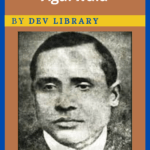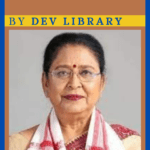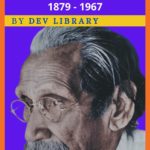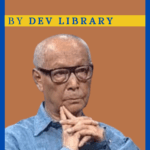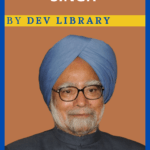India was not released on the same day from nearly 200 years of British rule. In the end was the people of India’s efforts towards freedom. The people of India unitedly launched a revolution against the British. And youths from different parts of greater India participated in this revolution. These young men and women created a sense of patriotism by actively participating in this freedom movement in the interest of the country. Ram Prasad Bismil is a powerful soldier of the freedom struggle against the British and one of the most important people who played a very important role in India’s freedom struggle. Ram Prasad Bismil was an Indian was an Indian poet, writer, and revolutionary who participated in the Mainpuri Conspiracy of 1918 and Kakori Conspiracy of 1925.
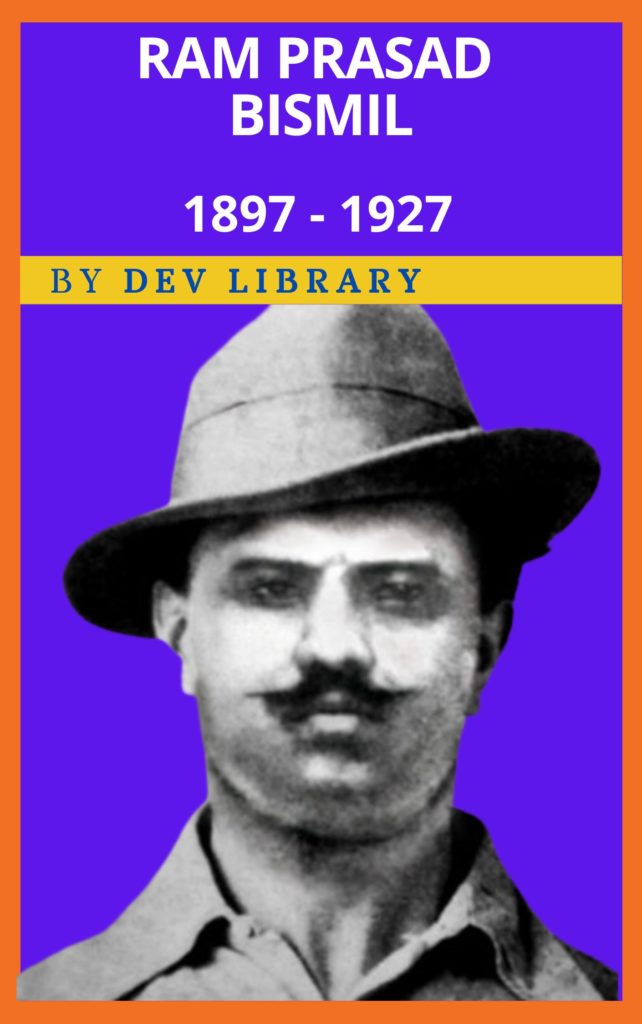
Biography of Ram Prasad Bismil
| Name | Ramprasad Bismil[1] |
| Date of Birth | June 11, 1897 |
| Place of Birth | Shahjahanpur, Uttar Pradesh |
| Father’s Name | Muralidhar |
| Mother’s Name | Moolmati Devi |
| Education | 1/ English Mission School 2/ Government School, Shahjahanpur |
| Died | December 19, 1927 |
Early Life of Ram Prasad Bismil
Ram Prasad Bismil was born on June 11, 1897 to a middle class Brahmin family in Shahjahanpur in Uttar Pradesh. His father’s name is Muralidhar and his mother’s name is Moolmati. Ram Prasad Bismil learned Hindi at home from his father at the age of seven and was send to learn Urdu from Moulvi. Ramprasad Bismil later enrolled in the English Mission School despite his father’s disapproval and passed the class VIII examination in the first division from this school. Bismil also joined the Arya Samaj in Shahjahanpur and showed a talent for writing patriotic poetry.
Importantly, Bismil joined the Arya Samaj founded by Dayananda Saraswati in 1875 It may be recalled that the Arya Samaj founded by Dayananda Saraswati had deeply underlined Bismil’s life. As an 18 year old student, Bismil read of the death sentence passed on Bhai Parmanand, a scholar and companion of Har Dayal. The message that Parmananda, a missionary brother of the heavily nationalist and Arya samaj, was arrested and sentenced to death in the Lahore case in 1915, deeply affected the life of Ram Prasad Bismil. And since then revolutionary thoughts took place in Bismil’s mind. However, later Bhai Parmanand’s sentence was diluted and the death penalty was suspended.
Also Read : Biography of Gulzarilal Nanda
Importantly, Ram Prasad Bismil published his revolutionary thoughts through poetry. It may be recalled that Bismil wrote powerful patriotic poems in Urdu and Hindi under the pseudonyms Ram and Agyat. At the age of 18, he expressed his anger against imperialist forces through a poem called Mera Janm (My Birth). This poem demonstrated a commitment to remove the British control over India.
It may be recalled that his guru Swami Somdev influenced the life of Ram Prasad Bismil, who was opposed to strict conservativism. Bismil was attracted to the British anti-colonial struggle under the influence of Somdev. Importantly, It was Swami Somdev who introduced Bismil to various works of the Italian revolutionary Satba Mazzini as well as other nationalist figures. It may be recalled that in 1916, Ram Prasad Bismil came in contact with the Anti-British revolutionary organisation “Matrivedi” (Altar of Motherland) in parallel with his participation in the Lucknow Congress session.
It was then in 1916 that Ram Prasad Bismil published a book called “America Ko Swadheenta Kaise Mili”. It may be recalled that through this book, Bismil expressed the need for political freedom for the progress of the nation only through the armed struggle for freedom. In 1918, through the publication of a leaflet called “Deshvasiyon Ke Naam Sandesh” (A Message to Countrymen) urged the people of the country, all communities, to fight the British Raj together.
Mainpuri Conspiracy
Bismil formed a revolutionary organisation called Matrivedi ( Altar of Motherland) and contacted Genda Lal Dixit, Bismil along with Ganda Lal Dixit, a school teacher from Auraiya, organized youth from Mainpuri, Agra and Shahjahanpur districts to strengthen their organizations, ‘Matrivedi’ and ‘Shivaji Samiti’. He also distributed Bismil’s poetry book to the Mainpuri ki Pratigya (Vow of Mainpuri) published on January 28, 1918.
Bismil participated in the 1918 Mainpuri conspiracy and recorded his name as a prominent freedom fighter. Importantly, on November 1, 1919, the judge of the Judiciary of Mainpuri, B.S. Chris, pronounced a verdict against all the accused in the conspiracy and arrested all those involved in the conspiracy. However despite various efforts the police could not arrest Bismil in view of which he was declared absconding.
Ram Prasad Bismil started a publishing house called Sushil Mala in 1920. He later published a novel called Bolshevikon Ki Kartoot based on the Russian revolutionary movement. He also published a collection of poems called Man Ki Lahar and a biography of the Socialist Revolutionary Catherine Breshkovsky or Swadhinta Ki Devi of Russia Catherine. He used his pen as a powerful weapon against the British. It may be recalled that he had published various writings in several nationalist journals, including Aaj, Vartaman, Prabha etc. under the pseudonym Agyat.
Significantly, even though the revolution was initiated by pen, the ideal of Ram Prasad Bismil’s freedom struggle was in stark contrast to Mahatma Gandhi’s ideals and he did not believe in Mahatma Gandhi’s non-violence policy. He was of the view that freedom could not be achieved through non-violence. Bismil joined Sasindra Nath Sanyal and Dr. Jadugopal Mukherjee in 1924 to form the Hindustan Republic Association due to various ideological clashes, growing discontent with various Congress leaders and the association was associated with leaders like Bhagat Singh and Chandrashekhar Azad.
After the failure of the non-cooperation movement, the revolutionaries were reorganized through the Hindustan Republican Association inspired by the Socialist Revolution and the Peasant Revolution of Russia, and along with this organization, Ram Prasad Bismill was closely involved at that time and announced through a leaflet that they would continue to struggle until the end of ‘exploitation of people by people’.
Manifesto of H.R.A.
A pamphlet entitled as The Revolutionary was distributed throughout the United Province in India in the beginning of January 1925. Copies of the leaflet, referred to in the evidence as the “White Leaflet”, were also found with some other alleged conspirators of Kakori Conspiracy as per judgement of the Chief Court of Oudh. A typed copy of this manifesto was found with Manmath Nath Gupta. It was nothing but the Manifesto of H.R.A. in the form of a four paged printed pamphlet on white paper which was circulated secretly by post and by hands in most of the districts of United Province and other parts of India.
This pamphlet born no name of the printing press. The heading of the pamphlet was : “The Revolutionary” (An Organ of the Revolutionary Party of India). It was given first number and first issue of the publication. The data of its publication was given as 1 January 1925.
Kakori Train Robbery
Bismil executed a meticulous plan for looting the government treasury carried in a train at Kakori, near Lucknow in U.P. This historical event happened on 9 August 1925 and is known as Kakori train robbery. Importantly, on August 9, 1925, under the leadership of Ram Prasad Bismil, along with his associate Ashfaqulla Khan and others stopped the 8 Down Sahyaranpur-Lucknow a passenger train at Kakori – a station just before the Lucknow Railway Junction to raise funds for arms procurement from Germany and looted the government treasury by subsuming the railway staff. This was followed by the British regime arresting many members of the Hindustan Republican Association and sentenced them to death. It may be recalled that Ram Prasad Bismil, Ashfaqulla Khan, Roshan Singh and Rajendra Nath Lahiri were sentenced to death after conducting about 18 legal trials. Bismil was hanged in Gorakhpur jail on December 19, 1927, Ashfaqulla Khan in Faizabad jail and Thakur Roshan Singh in Naini Allahabad Jail. Rajendra Nath Lahiri on the other hand was hanged in Gonda Jail two days ago.
Conclusion
It may be recalled that the body of Ram Prasad Bismil was subsequently burnt on the banks of river Rapti as per Hindu rules. And now this place is known as Rajghat.
Ram Prasad Bismil was not just a freedom fighter he was a way to take India on the path of progress. He will remain a brilliant fighter for the entire Indian even if he dies at a very young age. Bismil’s uncompromising stance and courage gave a new impetus to the Anti-British movement across India. Bismil is a symbol of patriotism, sacrifice and courage, he is a person that reminds us of the smiling sacrifices for the country at every time.
FAQ
1.Where and when was Ram Prasad Bismil born?
Ans: Ramprasad Bismil was born on June 11, 1897 in Shahjahanpur, Uttar Pradesh.
2.What is the name of the father and mother of Ram Prasad Bismil?
Answer: Ram Prasad Bismil’s father’s name is Muralidhar and his mother’s name is Moolmati.
3.What is the pseudo of Ram Prasad Bismil?
Answer: Ramprasad Bismil’s pseudonym is Ram and Agyat. It may be recalled that he wrote powerful patriotic poems in Urdu and Hindi under this pseudonym.
4.What is the name of the poem written by Ram Prasad Bismil at the age of 18?
Answer: The poem written by Ram Prasad Bismil at the age of 18 is called Mera Janm. Ram Prasad Bismil expressed his anger against imperialist forces through this poem.
5.How did Ram Prasad Bismil died?
Answer: Ram Prasad Bismil was sentenced to death by the British through hanging, Because on August 9, 1925, a passenger train stopped at Kokori near Lucknow to raise funds for arms collection from Germany and the government treasury was looted by the leadership of Ramprasad Bismil.
6.Why did Ram Prasad Bismil opposed Mahatma Gandhi’s ideology?
Answer: Ram Prasad Bismil did not believe in Mahatma Gandhi’s non-violence policy. According to his view freedom could not be achieved through non-violence. So Bismil opposed Mahatma Gandhi’s ideology.

Hi, I’m Dev Kirtonia, Founder & CEO of Dev Library. A website that provides all SCERT, NCERT 3 to 12, and BA, B.com, B.Sc, and Computer Science with Post Graduate Notes & Suggestions, Novel, eBooks, Biography, Quotes, Study Materials, and more.


